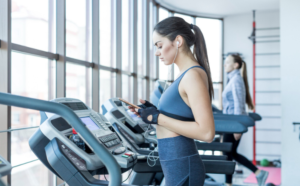In recent years, people have turned to Whole Body Vibration (WBV) machines because they are said to be able to help with a wide range of health issues such as weight loss and muscle strengthening. A basic WBV machine usually consists of a platform that vibrates at different frequencies in order to make muscles contract automatically without any effort on the user’s part. Critics, however, wonder if it delivers on its promises amidst all this hype. This article will evaluate whether or not WBV machines work by looking at what scientific evidence says about their effectiveness.
Understanding Whole Body Vibration:
To determine the efficacy of WBV machines, we need first understand how they operate: through transferring mechanical vibrations into our bodies which cause involuntary muscle contractions aimed at stabilizing against vibration. According to proponents, this leads increased activation of muscles as well as improved blood circulation among other benefits.
Examining the Evidence:
Various studies have been carried out to find out if WBV machines can indeed improve health across different populations and health conditions. But still many trials do not provide enough evidence.
Muscle Strength and Power:
Muscle strength may increase due to power when an individual using whole body vibrations. Especially those who are untrained or having certain illness like osteoporosis; nevertheless these effects differ depending on frequency duration amplitude targeted muscle group etcetera.
Bone Density:
One key benefit often mentioned is that it could enhance bone density thereby lowering risks associated with fractures related to osteoporosis but while some show slight rise in postmenopausal womens’ mineral content others fail even produce noticeable impact plus long term implications remain unknown too.
Weight Loss and Fat Reduction:
Unfortunately there isn’t much proof indicating that WBV alone aids in losing weight significantly; only few investigations documented low-fat mass reductions together with decrease waist circumference but such outcomes were moderate and unsustainable unless supported by dietary changes coupled with exercises overtime.
Circulation and Flexibility:
By increasing blood flow around joints it should promote flexibility hence ability move easily thus preventing injuries during workouts besides speeding up rehabilitation process after an injury has occurred. Although some cases reported improvement for short periods more research required establish whether these gains can be maintained over time or not.
Rehabilitation and Physical Therapy:
Nowadays WBV is being used as a complementary therapy for rehabilitating different musculoskeletal injuries and conditions. Existing data supports its use in balance retraining among other things but still there are not enough conclusions drawn from them since many more investigations need to be done determine best ways of utilizing this intervention alongside other treatment modalities in patients with various clinical presentations.
Conclusion:
To sum up, the question “do w.b.v work?” cannot be easily answered either yes or no; although evidence suggests that they might help improve muscle strength bone density physical functions like walking balance etcetera scientific consensus about their overall effectiveness is still tentative and may vary depending on age fitness level underlying medical history
Just like any exercise or therapy, WBV machines should be critically approached and advice from healthcare professionals sought before integrating them into a fitness program especially for individuals with pre-existing medical conditions. Although they could help enhance some health and physical aspects, there is still need for more extensive studies to prove their effectiveness and set usage standards. Therefore, until this is done consumers need to be careful about what manufacturers or promoters claim about these devices while also being doubtful about it at the same time.



